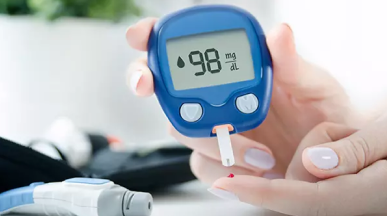Testing blood sugar levels is crucial for individuals with diabetes to effectively manage their condition. Here’s a comprehensive guide on how to perform a proper and painless blood sugar test for accurate results:
- Wash and Dry Hands: Before testing blood sugar, wash your hands thoroughly with warm water and soap. Ensure they are completely clean and free of any contaminants. Avoid using hand sanitizer gel or alcohol-based wipes, as they may affect test results.
- Prepare the Lancet Device: Insert the lancet needle into its place and remove the plastic cap. Ensure the cap is securely in place to prevent contamination and reduce pain during testing.
- Adjust Lancet Depth: Adjust the lancet device penetration depth based on the thickness of the skin and desired penetration depth. Ensure the depth setting is neither too high nor too low to avoid pain or insufficient blood extraction.
- Code the Blood Sugar Device: Check if your blood sugar testing device requires coding. Follow the coding instructions provided to ensure accurate results.
- Insert Testing Strip: Use a standard blood sugar testing strip and insert it correctly into the device. Avoid touching the test area of the strip to prevent damage or moisture affecting the test results.
- Prepare Finger for Testing: Choose a finger for blood sampling and massage it gently. Use another finger to gently squeeze the base of the chosen finger to collect blood. Avoid using fingertip areas for testing, as they may cause pain due to nerve endings.
- Alternative Testing Areas: If your device allows alternative testing areas (AST), you can use areas such as the forearm, palm, toes, and calves. However, fingertip blood samples provide more accurate results and indicate changes in blood sugar levels more quickly.
- Rotate Testing Spots: Rotate testing spots on all fingers and both hands to prevent skin damage and ensure accurate results. Each finger has two sides, providing multiple testing areas.
By following these steps, individuals with diabetes can perform a proper and painless blood sugar test to monitor their condition effectively and make informed decisions regarding their health and management strategies. Always consult with a healthcare professional for guidance on blood sugar testing and diabetes management.

